Haworthias are pretty succulents with different varieties native to southern Africa. They have small foliage, sometimes growing in bundles. Though succulents are loved for their beautiful, unique look, they are also known for their flowers. Do Haworthias flower? Let’s find out.
Generally, Haworthias bloom in the summer or autumn seasons when they receive a suitable growing environment. They grow a long stem from which they flower, and this stem is known as a flowering stem. Proving your haworthia with morning or evening sun will help them flower.
You might have noticed such an unusual stem growing from your Haworthia plant. This article will explain when and how Haworthias flower, what to do when they flower, and how you can keep the stem and the plant healthy.
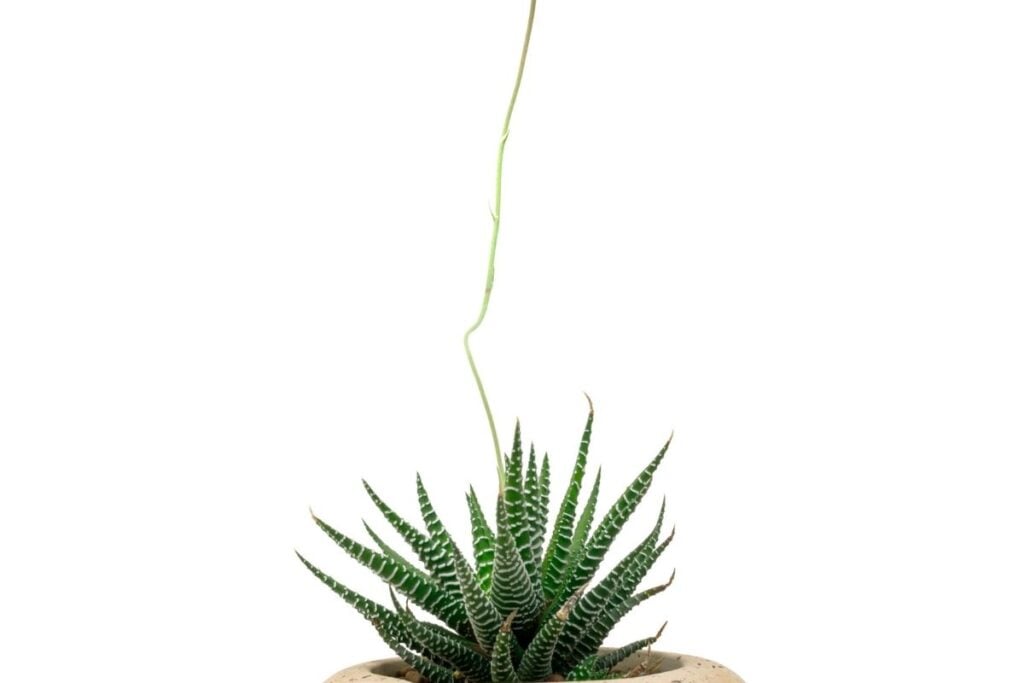
Do Haworthias bloom?
Yes, Haworthias bloom. Haworthias bloom from their stems, called flowering stems, unlike other plants.
Haworthias are not only known for their leaf patterns and their growth in clusters but are also known for their flowering stems.
The flowers of Haworthias are white with a yellow center and look like a white star.
A Haworthia will only bloom when they receive all their requirements adequately, and their growth and development are not interrupted by any problems.
Blooming is a sign that the plant has thrived.
When do Haworthias flower?
Different species of Haworthias grow at different locations growing in different types of climate, even at a climate receiving abundant and irregular rainfalls.
Different types of Haworthia will bloom at different times of the year.
Generally, the expected flowering time is either in the summer or autumn.
Mainly they flower during the long summer days.
But, due to their slow-growing nature, there are very few chances of seeing bright flowers.
Most people claim that they have witnessed Haworthia flowering right within four months after bringing it home.
It is because they bought a mature plant.
But in general, Haworthias will take at least 2-3 years to bloom.
But some don’t even flower.
How do they flower? – Haworthia flowering explained
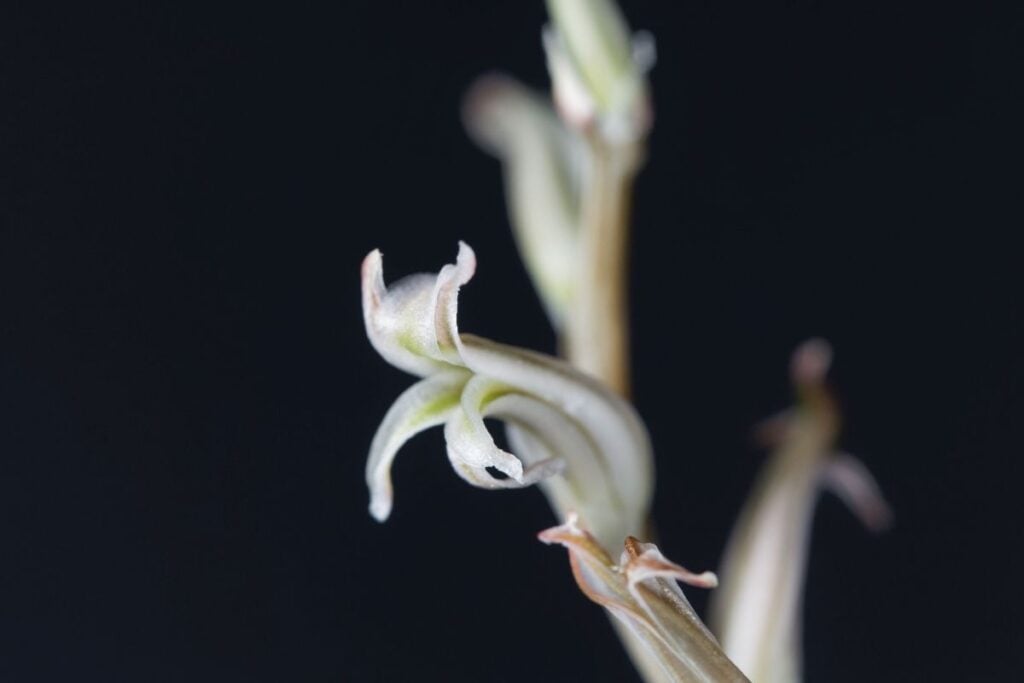
When Haworthias are about to bloom, they will grow a stem.
Generally, Haworthias grow about 4 to 20 cm.
The flowering stem is relatively longer than the plant, around 16 inches, and it is called an inflorescence.
The stem is quite long and skinny.
As they grow, you will find a cluster of buds at the end of the stem.
When this happens, it seems like the stem is not a part of Haworthias.
Looking for gardening supplies? We have tested 100's of products before recommending them to you guys. Check out our best pick below:
| Image | Gardening Supplies | Best Price? |
|---|---|---|
 Top
Top Top
Top | Raised Garden Bed Kit | Check On Amazon |
 | XLUX Soil Moisture Meter, Plant Water Monitor, Soil Hygrometer Sensor for Gardening, Farming, Indoor and Outdoor Plants, No Batteries Required | No Results |
 Top
Top Top
Top | 82 Pcs Garden Tools Set and Extra Succulent Tools Set | Check On Amazon |
 | Joeys Garden Expandable Garden Hose with 8 Function Hose Nozzle, Lightweight Anti-Kink Flexible Garden Hoses, Extra Strength Fabric with Double Latex Core, (50 FT, Black) | No Results |
 Top
Top Top
Top | Dual Chamber Compost Tumbler | Check On Amazon |
 Top
Top Top
Top | Sunnyglade Plant Stakes | Check On Amazon |
 Top
Top Top
Top | Organic Cold Pressed Neem Seed Oil | Check On Amazon |
 Top
Top Top
Top | Mighty Mint Gallon :-Insect and Pest Control Peppermint Oil | Check On Amazon |
 Top
Top Top
Top | Scotts DiseaseEx Lawn Fungicide | Check On Amazon |
 Top
Top Top
Top | Jacks Classic 20-20-20 All Purpose Fertilizer | Check On Amazon |
 Top
Top Top
Top | 30,000 Seeds Pollinator Attracting Wildflower Mixture | Check On Amazon |
 Top
Top Top
Top | Survival Vegetable Seeds Garden Kit-Over 16,000 Seeds | Check On Amazon |
Do Haworthias die after flowering?
Many succulents and plants grow a death bloom which means when the plant dies after blooming.
This process of death after flowering is called the monocarpic process.
But, exceptionally, Haworthias don’t die after flowering.
That is why they can flower multiple times without dying.
How to keep the flowering stem healthy?
When the flower grows, the inflorescence for blooming it will require more water.
Once the stem grows too long, they will need more water to hold themselves up.
Whenever you see that the stem is growing longer, increase the watering gradually so that the stem stays healthy.
What should I do with the flower stalk or stem?
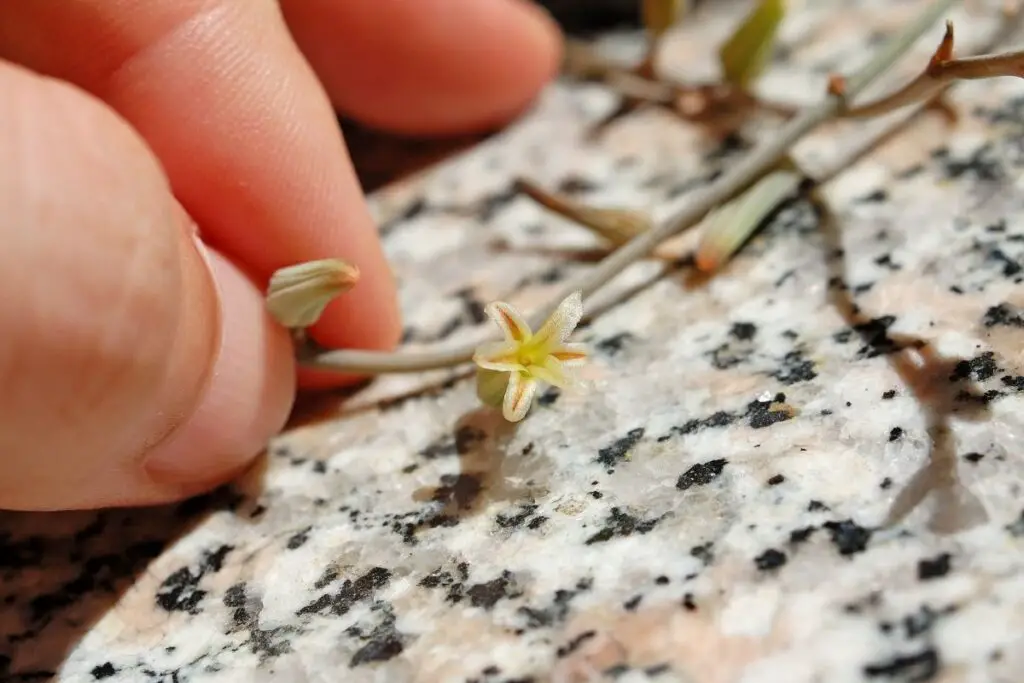
Once the flower blooms and dies, cut the stem.
Leave 1 to 2 cm from the point where it emerged. Be careful while doing it.
Don’t hurt the plant in the process.
After some days, the stem will dry out completely, and then you can remove the whole stem fully.
Many gardeners let the stem stay because they want to see how long it can grow.
Generally, it will grow around 16 inches.
Cutting the stem from the plant keeps Haworthia in control.
It looks very odd when the stem grows too long.
While trimming, use a sterilized pruner or scissor.
However, it might take longer for the flower to bloom and die completely.
The stem will grow very long if you wait and make your plant look awkward.
So, you can cut the stem off before they grow too long.
How to get Haworthias to bloom?
Haworthias will not bloom right after you bring them home.
They are slow-growers and will take at least 2-3 years to flower.
The plant will first need to grow mature and then bloom.
Some people say that their Haworthias have bloomed after four months of being brought home.
It may be because they have already bought a mature plant.
Besides the time, it also depends on luck to see them bloom.
If you are lucky enough, you might see them blooming.
But you can try to make them bloom with proper care.
Bright indirect sunlight
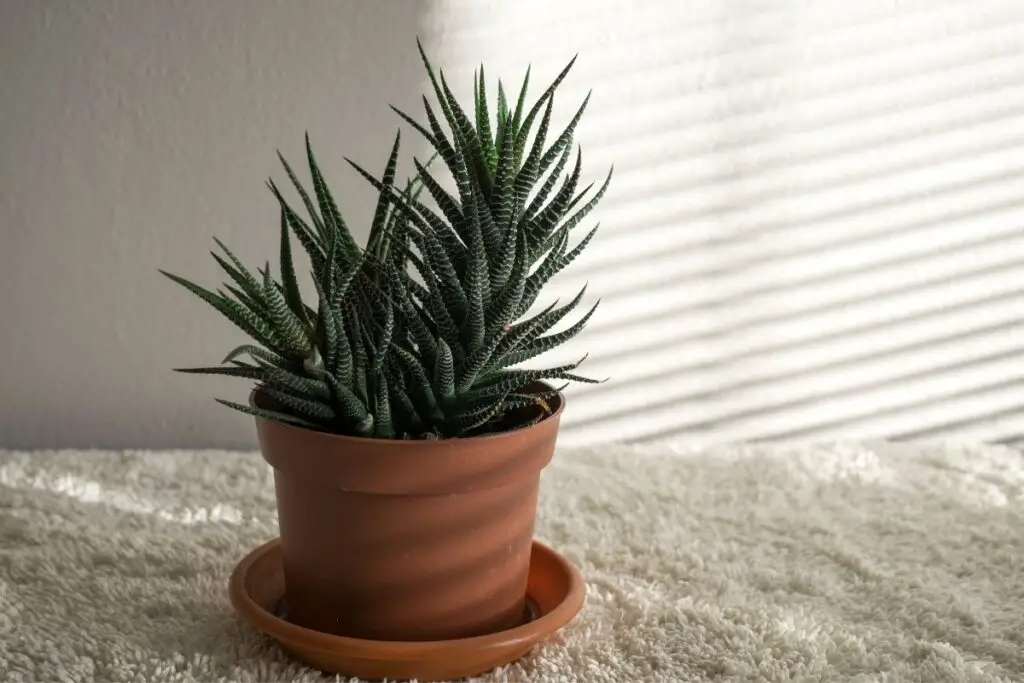
Though Haworthias can tolerate direct sun, they grow best under bright indirect sunlight.
Exposure to direct sun can cause sunburn on your Haworthia.
If you want to give them direct sunlight, make sure to do it early morning.
The less intense morning sun can do an incredible job for Haworthia’s good health.
Haworthias will love it.
The plant will only bloom when they receive an adequate amount of sunlight.
If you have planted them at an all-time sunny spot, put on a removable shading net or cloth to filter the sunlight after 11 am.
Until then, remove the shade to allow the plant to receive the direct morning sun.
Also read: How Much Light Does Haworthia Need? (Haworthia Light Requirements)
Give them enough water to stand straight.
I have mentioned that giving adequate water will keep the stem healthy, strong, and straight.
But make sure not to overwater them.
Since they are succulents and can hold water in their leaves and stems, frequent watering can result in overwatering and root rot.
Whenever the top inches of soil feels dry, you can water the plant.
Don’t water during the summers as they are dormant.
Also, water them less in the winters since the soil takes lots of time.
The plant flowers mostly in the summers, and it is time for their dormancy.
Be cautious while watering because it will need water to hold itself up when the flowering stem emerges.
Water the plant very lightly when the stem starts wilting.
Be very careful if this happens in summer since it is their dormancy period.
Also read: How Often To Water Haworthia? (Haworthia Water Requirements)
Adequate drainage
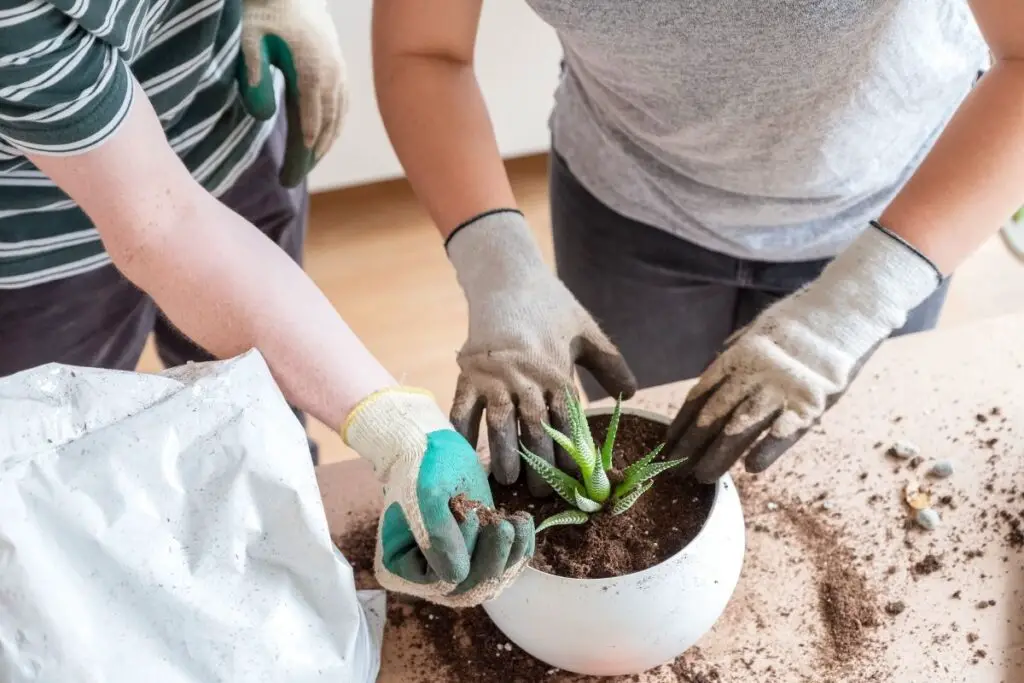
Two things need to be looked upon when it is about drainage:
- Soil
- A container if you are using one.
First, the soil must be well-drained so that the plant doesn’t experience root rot.
If the soil fails to drain excess water, water will remain stagnant.
The roots will stay wet for a long time and thus result in rotting.
All the succulents must experience a dry period. Otherwise, they will rot.
Use soil mixes like:
- 40% parts potting soil
- 40% parts small gravel
- 20% part perlite or pumice
For soilless mixes in containers:
- 50% gravel of appropriate size
- 50% of soil, coarse sand, and organic fertilizer
You can also add perlite, aquarium gravel, horticultural pumice, and poultry grit to your soil bed to improve drainage.
Next, the container you use must have drainage holes.
Drainage holes confirm the draining of excess water and support good air circulation in the root areas and soil.
It helps to dry out the roots faster and prevent rotting.
Also read: What Soil To Use For Haworthia? (+Ideal Soil Mix)
Repotting
Haworthias multiply by growing pups.
You must repot them to a bigger pot when this happens as they have limited space to grow in the pots.
These pups grow near the root portion.
Slowly they come near the top of the soil.
Seeing them near the roots in the first place is not possible as it is inside the soil.
When you see them coming on the top side, shift them to a new container slightly bigger than the current one.
Remember to choose a pot that is only 1-2 inches bigger than the current one.
Don’t go a very big pot as that can cause overwatering and rotting.
They are slow-growers can don’t need a big pot.
1-2 inches bigger is enough to give the plants to form more baby plants.
It will not interrupt the plant’s smooth growth, thus encouraging blooming.
Also read: Do Haworthia Like To Be Root Bound? (+When & How To Repot)
Fertilizing
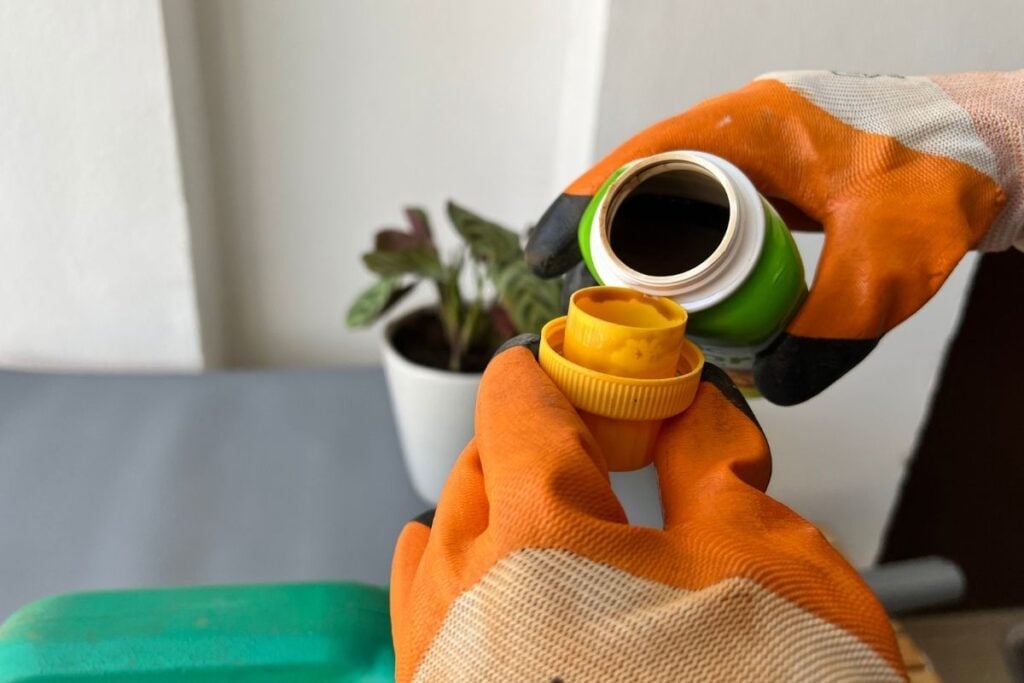
Fertilizing might help promote the plant in growing healthily and blooming.
Generally, fertilizing Haworthias can help these slow-growing plants grow a little faster.
It will give them nutrients certain nutrients that the soil might be missing.
With proper nutrients, the plant will grow smoothly and a little faster.
A smooth and healthy growth and development will encourage the plant to produce blooms.
Keep one thing in mind.
If you are unsure about the fertilizing amount and frequency, you don’t have to fertilize them.
Haworthias are not heavy feeders.
Replacing the soil every 2 to 3 years can boost the plant and encourage the plant to grow effortlessly without any issues.
Also read: How To Fertilize Haworthia? (Best Fertilizer+When To Use)
Other brief care tips
- Don’t let them have a very cold temperature, especially below 30 degrees. Take them indoors in winters during such weather.
- Don’t keep them near air conditioners or heaters.
- Don’t keep them near aquarium, bathroom, kitchen, or fireplaces if they are indoors. These are some of the most humid areas, and Haworthias don’t enjoy high humidity.
- Look out for pests and diseases. Try to treat the plant as soon as possible to stop them from spreading. These are some of the problems that prevent the plant from smooth growth and blooming.
Final thoughts
Haworthia is one of those unique plants that flower from a flowering stem named inflorescence. With proper care and maintenance, your Haworthia will flower multiple times.
Haworthias don’t die after flowering, and that is why they will flower many times. You can cut off the stem from the plant by leaving it a few centimeters from the starting point of its growth. Remove the rest when the stem dries completely.
Let them have bright indirect light, sufficient water as suggested, fertilize once in spring and fall, plant in well-drained soil, use containers with drainage holes, don’t expose them to cold temperatures, and check out for pests. These are some of the basic needs.
Repot when the pups of your Haworthia start peeping out of the soil. That is all you need to do to encourage smooth development, further promoting flowering.
Reference: The Haworthia Society, Botanical Studies, University of Wisconsin-Madison, Sciencedirect, Researchgate, Haworthia Study.
